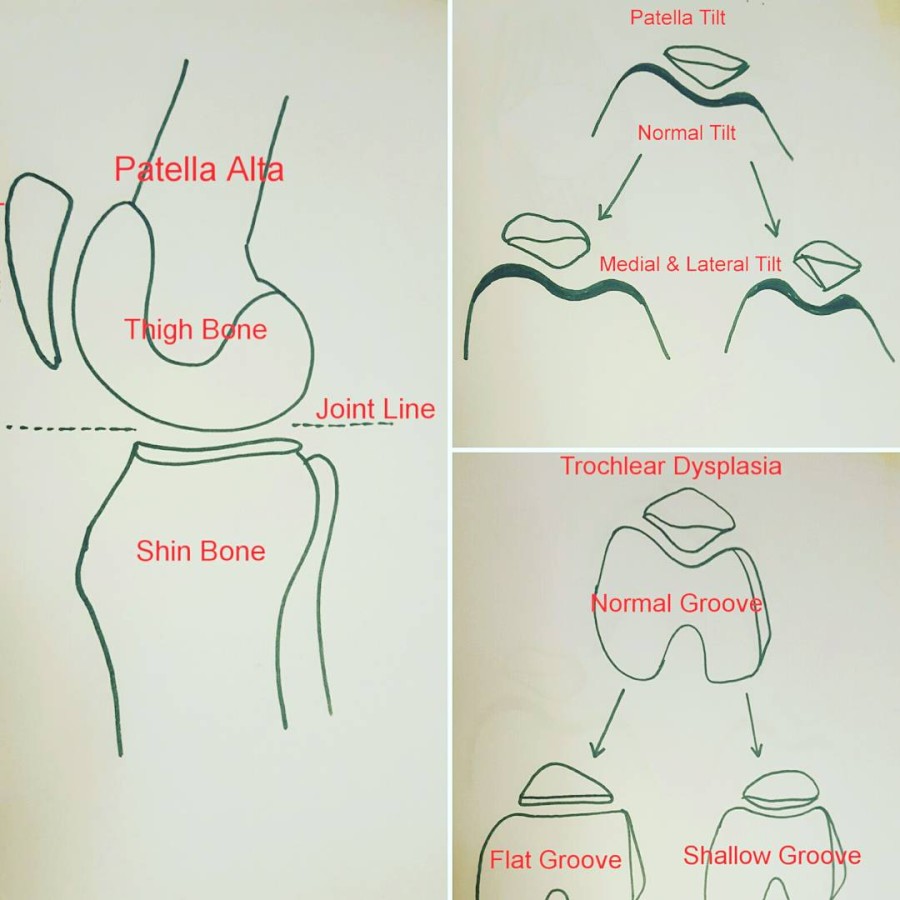#PATELLOFEMORAL PAIN
CAUSES PART 1:
INVOLVING THE KNEECAP ITSELF
– #Patella Alta – above left diagram. Generally kneecaps sit in the groove and the bottom of the kneecap is about level with the joint line. However, people born with an unusually high knee cap or those left with one after surgery are susceptible to much faster degeneration of the back of the kneecap as it doesn’t sit in the groove well.
If the bottom angle of the #kneecap is line with or below the joint line (imaginary line where the knee bends) this is considered to be ‘normal’ or less likely for #cartilage damage to occur as quickly as when it is high.
– #Trochlear Dysplasia – see above bottom right. This is when instead of having a stable groove to sit in. The kneecap sits in a shallow or flat groove. This allows excessive movement particularly right and left and decreases stability of the patella. It can lead to increased incidences of #dislocation and faster degeneration. When moving the kneecap side to side in a stable trochlear, the kneecap should rise a little when pushing to the outside of the leg.
Test for a shallow groove is done using the inverted J sign
– Patella Tilt – see above top right. If the patella is tilted one side more than the other, there is more chance of wearing on the side closer to the thigh bone. One tests this by springing the kneecap on the right and left sides.
Patella Testing:
1. Inverted J Sign – sit on high surface knees dangling of the side. Extend and flex knees, watch for patella moving excessively up and out as the knee extends or see link below.
Then with the legs completely extended on a couch:
2. Check lowest angle of kneecap is in line with the joint line
3. Spring the kneecap on either side to test the tilt
4. Palpate behind kneecap when sliding it to the side for pain
5. Holding the kneecap to the left and then to the right, contract the quads. Test for apprehension or pain.
6. Lift kneecap and contract quads. See if pain disappears.
More to come!



